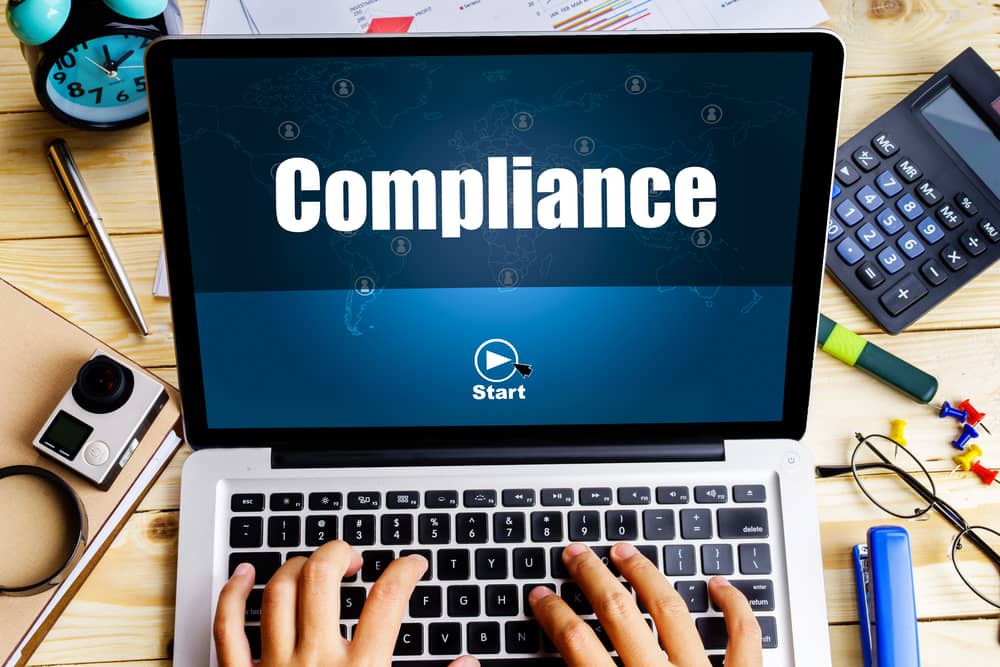In Europe, the latest European Accessibility Act (EAA) 2025 has revolutionized how businesses maintain accessibility. Like the Accessible Canada Act, the EAA ensures that products and services are equally accessible to all individuals with disabilities, promoting inclusion.
Keep reading to learn more about the European Accessibility Act (EAA), including its objectives, guidelines for businesses and developers, and how an Accessibly website accessibility overlay widget can help align your business’s website with upcoming changes.

What Is the European Accessibility Act 2025?
Effective as of June 28, 2025, the European Accessibility Act of 2025 is an accessibility framework for the EU market/EU member states, working to reduce barriers across the public sphere with services covered, such as websites, banking services, communications technology, ATMs, and more. It relies on the set of uniform standards for compliance, to be met by all businesses operating within the European Union. With roughly 15% of the world living with partial or total disability, now is never a better time to put the EAA in focus.
The EAA’s requirements for European countries depend on the type of business. For example, web and mobile apps must comply with WCAG 2.1 standards, which means several accessibility measures and technical requirements must be enacted, such as properly labeled form fields, logical page structures, and larger cursors for visually impaired users. Also, descriptive alternative text for screen readers to ensure product images are labeled correctly, as well as keyboard navigation (handy for mobile banking apps).
Additionally, the EAA requires ongoing monitoring to ensure compliance. As digital services undergo rigorous changes with frequent updates, it’s always a good idea to run manual and automated accessibility audits with every new version to ensure there are no gaps in accessibility, working towards incremental improvements.
One shining example of EAA accessibility best practices is Barclays’ online banking platform, which offers accessible and friendly features that enable individuals with disabilities to work with screen readers, text-to-speech, and other assistive technologies for a deeper understanding of site content.
Non-compliance with the European Accessibility Act of 2025 can lead to several repercussions, including fines in multiple countries. Fines vary by country; for example, fines can be imposed for infractions in France.
In addition to financial penalties, there may also be legal consequences (depending on the jurisdiction). For example, Ireland may impose imprisonment terms of up to 18 months, with authorities imposing market restrictions for non-compliant products or services.
With 15% of the world suffering from a partial or total disability, now is the time to focus on European accessibility more than ever.
Impact on Businesses
The EAA affects virtually every business offering digital products and services in the European Union. For example, e-commerce websites and mobile apps where people shop must offer accessible forms, keyboard navigation, and other elements to simplify the shopping experience. In turn, banks must focus on in-branch locations and equipment, such as banking ATM compatibility with the latest assistive technologies.
Other industries, such as education publishers, must make all of their learning materials equally accessible.
One of the downsides of the European Accessibility Act is retrofitting existing systems. Many industries have systems that are not accessible, requiring modifications to improve national assistance without operational in-house aid and expertise to keep up with the latest standards. Without properly trained staff, businesses run the risk of lawsuits and harm to their brand reputation if accessibility is not met.

Compliance Requirements for European Union Businesses
To meet EAA compliance, businesses are encouraged to take the following steps:
Conduct Regular Accessibility Audits
For EAA compliance, one of the first steps in preparing for EU Accessibility Compliance in 2025 is to conduct regular accessibility audits that combine manual and automated testing. Manual testing can include assistive technologies like screen readers and keyboard-only navigation tests run by small focus groups to gain insight into site problems.
In turn, automated accessibility tools like WAVE, Siteimprove, and Axe do an excellent job of quickly identifying numerous accessibility issues, such as missing alternative text, lack of keyboard navigation, and browser compatibility issues, allowing businesses to get up to speed relatively quickly.
As a best practice, we recommend conducting accessibility audits at least twice a year, or more frequently as needed when updating your existing websites and mobile apps. Always ensure that accessibility barriers do not exist with all of the new features you roll out. This is especially true for businesses that frequently update their content.
Are You Meeting WCAG 2.1 Standards?
After conducting your manual and automated digital accessibility audits, the next step is to determine if you are meeting WCAG 2.1 accessibility requirements by performing a gap analysis. Identify all gaps in your website’s accessibility and address them according to the specified criteria. For example, your e-commerce website may lack proper keyboard navigation, which is a violation of WCAG 2.1.
As part of the evaluation, you also want to make sure that you’re categorizing issues by severity and impact on users. For example, missing alternative text on images and missing keyboard navigation should be prioritized over decorative image labeling. Not all accessibility gaps are created equal.
User Feedback and Testing
One of the best ways to get first-hand accounts of your accessibility issues is by conducting automated and manual audits. Automated tools include WAVE, Axe, and Accessibly’s website accessibility overlay widget, which can help uncover accessibility issues on your site.
In turn, WAVE allows you to uncover problems like missing alt text or poorly structured semantic HTML, whereas Accessibly instantly upgrades your site with additional features to assist individuals with disabilities, such as larger cursors, optimized background and foreground colors, and additional reading lines.
On the manual side, it’s all about collecting real-world user feedback. One of the best things you can do is conduct focus groups with users with disabilities to navigate your website or mobile application, performing actual tasks, such as taking a product through a checkout process or verifying navigation. Don’t be surprised if you already have confusing navigation flows.
Plus, you can even test screen reader compatibility, where you may uncover that buttons might not be properly labeled. Keep in mind that automated tools make up less than half of accessibility issues, which is why collecting human feedback is so important.
Fix, Fix, and Fix
Once you’ve determined whether you’re meeting WCAG 2.1 standards, prioritize addressing high-impact digital accessibility issues first. For example, broken navigation menus can take greater precedence than your heading structures. In turn, keyboard navigation and screen reader compatibility should be prioritized over visual elements on your website.
By following this process, you’ll work on prioritizing high-priority design tweaks instead of low-priority ones so that you can tackle as many accessibility problems at once as possible.

Train Staff on Accessibility
Once you have addressed all accessibility issues, the next step is to ensure ongoing training and support in your organization. All of your staff, including developers and content creators, must prioritize accessibility and should be trained on all aspects of accessibility, including the correct use of ARIA roles, the proper writing of alternative text for images, and the use of appropriate semantic HTML, among other topics.
Some of the ways you can help staff learn accessibility include hands-on workshops, like introductory class and how to introduce ARIA labels to forms for web developers, and role-based training. For example, your organization’s content creators can focus on captioning videos and writing descriptive alternative text, whereas developers can focus more on semantic HTML and keyboard navigation.
One of the best examples of accessibility is the BBC, which requires all of its digital teams to undergo regular accessibility training. By establishing accessibility training as part of your work culture, you’ll be able to work towards improvement continually.
Keep Compliance Documentation
Another critical aspect of the EAA is maintaining detailed compliance documentation of all accessibility practices. Keep a running track record of all your ongoing issues and the steps you’ve taken to remediate them, in case regulators come knocking on your door. It also allows you to keep an eye on future improvements. For example, there should be available documentation to let authorities know how previous accessibility issues were handled.
Failure to maintain accurate documentation can result in penalties from regulators. It’s one of the best ways to avoid regulatory inquiries, and some of the continent’s organizations (e.g., Deutsche Telekom) are known for maintaining well-organized compliance documentation.
Ongoing Monitoring and Training
Remember that accessibility is not a one-time training effort; it requires ongoing attention and maintenance. The European Accessibility Act requires all businesses to ensure that staff are continually trained, with regular monitoring incorporated into their workflows.
For example, Spotify’s CI/CD (continuous integration/continuous deployment) pipeline conducts regular accessibility scans to ensure all gaps are covered, keeping the renowned music company in compliance with European standards.
Pay attention to manual versus automated testing as well, and set up quarterly reviews to track your progress. It’s also very important for your staff (everyone from designers to developers) to take advantage of refresher training sessions so that their accessibility knowledge remains up to date.
The Future of Accessibility: Predictions and Future Trends
As more and more European Union-based businesses meet accessibility standards, it’s essential to note that we can expect a range of new technologies that will eventually require full compliance.
For example, emerging technologies like AI-driven voice navigation and predictive text on websites and mobile applications targeting the mobility-impaired and those with cognitive impairments will require extensive work to meet new accessibility standards. Technologies like AR and VR will also need to adhere to accessibility requirements.
You will need to enable accessibility with emerging technologies like AI-driven chatbots, voice navigation, and augmented reality systems. Remember, the mandate is designed to be future-proof, meaning companies should be expected to integrate adaptive speech recognition models to accommodate a broader range of voice types, including those with diverse accents, varying speech speeds, and more.
For example, Voiceitt, an Israeli-based startup, specializes in speech recognition for individuals with non-standard speech patterns, working closely with European healthcare providers to integrate.
Another area where you can see the EAA make an impact is through managed reality and virtual reality systems, which are becoming more commonplace across several industries, especially education and tourism. For example, the Louvre in Paris has a dedicated app that can be upgraded to provide alternative navigation modes for low-visibility visitors, not just limited to audio descriptions. Additionally, expect VR interfaces with higher contrast text overlays and adaptive controller compatibility for individuals with mobility impairments. Remember, accessibility standards should also include these emerging technologies, not strictly for what exists today.

How Accessibility Can Help
With roughly 15% of the world suffering from a partial or total disability, now is the best time to focus on accessibility and make accessible products and services.
One of the best ways to stay on top of the European Accessibility Act is to use website accessibility overlay widgets like Accessibly, which allow businesses to instantly upgrade websites with WCAG 2.1-approved accessibility features, such as alternative text for images, larger cursors, contrast optimization between foreground and background, and more.
Trusted by more than 5,000 active clients, Accessibly is available in two versions: Premium and Enterprise. Premium is well-suited for websites with up to 50,000 monthly visitors. Enterprise is ideal for websites with more than 50,000 monthly visitors, offering dedicated support and advanced customization options at the Enterprise level. There are also dedicated plugins for Shopify and WordPress. It’s a great tool for novices and accessibility experts alike.
Additionally, it integrates seamlessly with all the top CMSs on the market, including WordPress, and supports the needs of EU-based businesses, as well as individuals with disabilities, to create a more inclusive society.What are you waiting for? Take that significant step to make your website accessible today and comply with EAA standards by enjoying a free Accessibly 7-day trial today!





